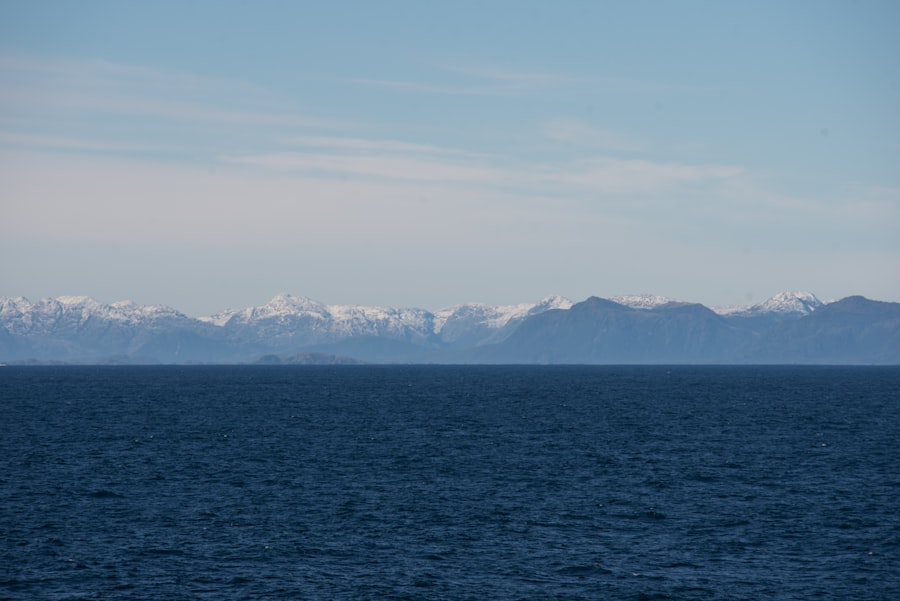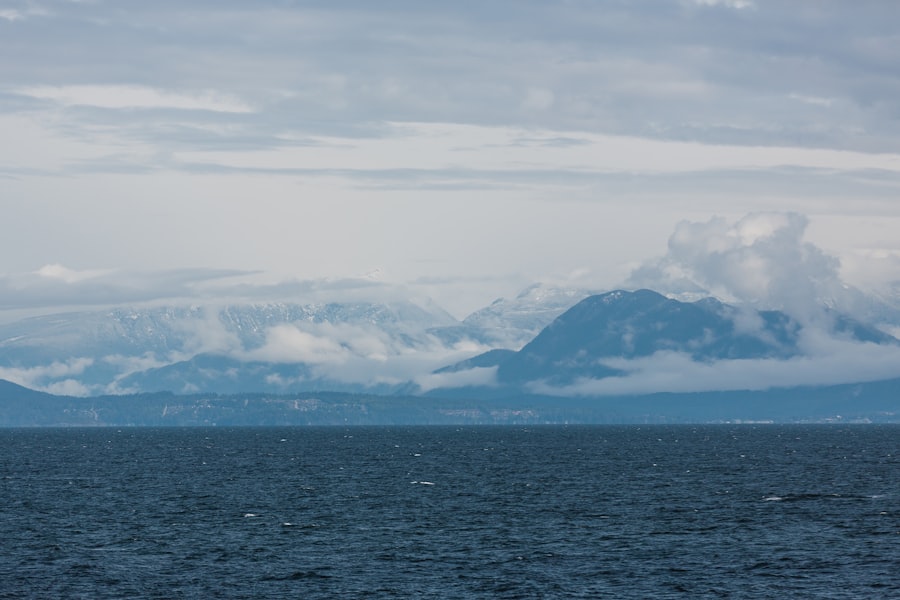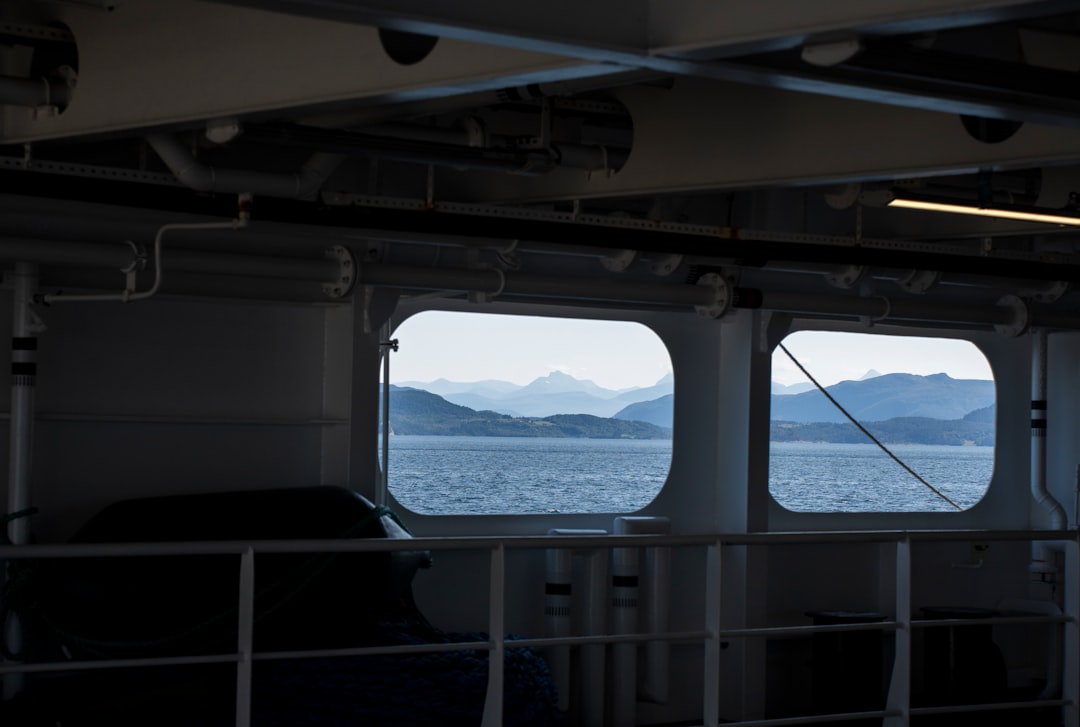The Drake Passage, a body of water situated between the southern tip of South America and Antarctica, is renowned for its tumultuous seas and unpredictable weather patterns. This narrow stretch of ocean, measuring approximately 600 miles wide, serves as a critical conduit for maritime traffic between the Atlantic and Pacific Oceans. Its significance extends beyond mere geography; it is a vital area for marine biodiversity, hosting a variety of wildlife, including whales, seals, and seabirds.
The passage is named after Sir Francis Drake, the English explorer who navigated these waters in the late 16th century, and it has since become a focal point for adventurers and researchers alike. The unique characteristics of the Drake Passage contribute to its reputation as one of the most challenging maritime routes in the world. The confluence of the Atlantic and Pacific Oceans creates a dynamic environment where strong currents and winds collide, resulting in rough seas that can be both exhilarating and daunting.
For those who dare to traverse this formidable stretch of ocean, understanding its complexities is essential for a safe and successful journey.
Key Takeaways
- The Drake Passage is a body of water between South America’s Cape Horn and the South Shetland Islands of Antarctica, known for its rough seas and unpredictable weather.
- Crossing the Drake Passage presents challenges such as strong winds, high waves, and potential sea sickness, making it essential to be well-prepared and mentally resilient.
- When preparing for the crossing, it’s important to pack warm, waterproof clothing, seasickness medication, and essential personal items to ensure comfort and safety.
- Safety measures for crossing the Drake Passage include attending safety briefings, following crew instructions, and being aware of emergency procedures on board.
- Coping with sea sickness can be managed by staying hydrated, getting fresh air, and focusing on the horizon to help alleviate symptoms during the journey.
The Challenges of Crossing the Drake Passage
Crossing the Drake Passage presents a myriad of challenges that can test even the most seasoned mariners. One of the most significant hurdles is the notorious weather, which can change rapidly and without warning. Sailors may find themselves navigating through thick fog, heavy rain, or fierce winds that can reach speeds of up to 60 knots.
These conditions not only make sailing difficult but can also pose serious risks to safety. The unpredictable nature of the passage means that careful planning and constant vigilance are paramount for anyone attempting to make the crossing. In addition to the weather, the physical characteristics of the Drake Passage add another layer of complexity.
The waters are known for their steep waves, which can rise to heights of 30 feet or more. Such conditions can lead to a harrowing experience for those aboard, as the ship may pitch and roll violently. This instability can be disorienting and frightening, particularly for those who are not accustomed to rough seas.
As a result, understanding these challenges is crucial for anyone considering a journey through this formidable passage.
Preparing for the Worst: What to Pack

Preparation is key when it comes to crossing the Drake Passage, and packing appropriately can make all the difference in ensuring a comfortable journey. Essential items include waterproof clothing, sturdy footwear, and layers that can be easily added or removed as temperatures fluctuate. A good quality life jacket is also a must-have, as safety should always be a top priority.
Additionally, travelers should consider bringing personal items such as sunscreen, sunglasses, and hats to protect against the harsh sun that can reflect off the water. Beyond clothing and safety gear, it is wise to pack items that will enhance comfort during the crossing. Sea sickness remedies, whether over-the-counter medications or natural alternatives like ginger or acupressure bands, should be included in any packing list.
Snacks that are easy to digest can also be beneficial, as they provide sustenance without overwhelming the stomach during turbulent conditions. Finally, entertainment options such as books, music, or games can help pass the time and distract from any discomfort experienced during the journey.
Safety Measures for Crossing the Drake Passage
| Safety Measure | Description |
|---|---|
| Life Jackets | All passengers are provided with life jackets and instructed on how to wear them properly. |
| Emergency Drills | Regular emergency drills are conducted to ensure all passengers and crew are familiar with emergency procedures. |
| Experienced Crew | The vessel is operated by a highly experienced crew trained in maritime safety and emergency response. |
| Weather Monitoring | Continuous monitoring of weather conditions to ensure safe passage and early detection of potential hazards. |
| Communication Systems | Reliable communication systems are in place to maintain contact with other vessels and emergency services. |
Safety measures are paramount when crossing the Drake Passage due to its unpredictable nature. Before embarking on this journey, travelers should familiarize themselves with emergency protocols and safety equipment available on board. Most vessels will have life rafts, flares, and first aid kits readily accessible in case of an emergency.
It is advisable for passengers to participate in safety drills conducted by the crew to ensure they know how to respond in various situations. Additionally, maintaining communication with the crew is essential for safety during the crossing. Travelers should not hesitate to voice any concerns or seek guidance from experienced crew members who are well-versed in navigating these challenging waters.
Regular updates on weather conditions and potential hazards should be expected from the crew, allowing passengers to stay informed and prepared for any changes that may arise during their journey.
Coping with Sea Sickness
Sea sickness is a common concern for many travelers crossing the Drake Passage, given its notorious reputation for rough seas. Symptoms can range from mild discomfort to severe nausea and vomiting, making it crucial for individuals to have strategies in place to cope with this condition. One effective approach is to choose accommodations on lower decks where motion is less pronounced compared to higher levels of the ship.
Additionally, focusing on a fixed point on the horizon can help stabilize one’s sense of balance. Over-the-counter medications such as meclizine or dimenhydrinate are often recommended for preventing sea sickness. However, some individuals may prefer natural remedies like ginger tea or acupressure wristbands that apply pressure to specific points on the wrist.
Staying hydrated and consuming light meals can also alleviate symptoms by preventing an upset stomach. Ultimately, finding what works best for each individual is key to managing sea sickness effectively during this challenging crossing.
Mental Preparedness for the Journey

Mental preparedness plays a significant role in successfully navigating the challenges of crossing the Drake Passage. Understanding that rough seas and unpredictable weather are part of the experience can help travelers approach their journey with a positive mindset. Embracing an adventurous spirit and being open to unexpected occurrences can transform potential anxiety into excitement.
Practicing mindfulness techniques can also be beneficial in managing stress during turbulent moments at sea. Deep breathing exercises or meditation can help individuals center themselves and maintain calmness amidst chaos.
Engaging in conversations with fellow travelers can foster camaraderie and provide reassurance that others share similar feelings about the crossing. By cultivating a resilient mindset and focusing on the adventure ahead, travelers can enhance their overall experience while crossing this iconic passage.
Navigating the Unpredictable Weather
The weather in the Drake Passage is notoriously unpredictable, making it essential for travelers to stay informed about current conditions throughout their journey. Weather forecasts can change rapidly due to shifting atmospheric patterns, so relying on real-time updates from experienced crew members is crucial. Understanding how weather influences sea conditions can help passengers anticipate potential challenges and prepare accordingly.
Travelers should also be aware that certain times of year may offer more favorable weather conditions than others. The summer months in Antarctica (November through March) typically present milder temperatures and calmer seas compared to winter months when storms are more frequent. However, even during peak season, sudden weather changes can occur without warning.
Therefore, maintaining flexibility in travel plans and being prepared for various scenarios will enhance safety and enjoyment while navigating this unpredictable environment.
Tips for Surviving the Drake Passage
Surviving a crossing of the Drake Passage requires a combination of preparation, adaptability, and resilience. One key tip is to remain aware of one’s surroundings at all times; this includes paying attention to crew announcements regarding weather updates or safety protocols. Staying engaged with fellow passengers can also provide support during challenging moments at sea—sharing experiences and coping strategies can foster a sense of community among travelers.
Another important aspect of survival is maintaining physical well-being throughout the journey. Regularly consuming small meals and staying hydrated will help keep energy levels up while minimizing discomfort associated with sea sickness. Engaging in light physical activity on board—such as stretching or walking—can also alleviate tension and promote overall comfort during rough patches at sea.
Staying Active and Occupied During the Crossing
Keeping occupied during a crossing of the Drake Passage can significantly enhance one’s experience aboard a vessel navigating these challenging waters. Many ships offer various activities designed to engage passengers while providing opportunities for social interaction. From educational lectures about marine life and Antarctic history to guided wildlife spotting excursions on deck, there are numerous ways to stay entertained while at sea.
For those who prefer solitary pursuits, bringing along personal hobbies such as knitting, journaling, or reading can provide much-needed distraction during turbulent moments. Engaging with fellow travelers through games or group discussions can also foster camaraderie while alleviating feelings of isolation or anxiety during rough seas. By finding ways to stay active and engaged throughout the journey, passengers can transform what might otherwise be a daunting experience into an enjoyable adventure.
Finding Comfort in Uncomfortable Situations
Finding comfort in uncomfortable situations is an essential skill when crossing the Drake Passage. The unpredictable nature of this journey means that discomfort may arise at various points—whether from rough seas or cramped quarters aboard a vessel. Developing coping mechanisms such as deep breathing exercises or visualization techniques can help individuals manage stress during challenging moments.
Creating a personal space within shared accommodations can also enhance comfort levels during the crossing. Bringing familiar items such as photographs or small comforts from home can provide emotional support when faced with discomfort at sea. Additionally, fostering connections with fellow travelers can create a sense of belonging amidst uncertainty—sharing experiences and offering encouragement can help everyone navigate their discomfort together.
Reflecting on the Experience: Lessons Learned from Crossing the Drake Passage
Crossing the Drake Passage often leaves travelers with profound reflections on their experience long after they have returned home. Many individuals report feeling a sense of accomplishment upon completing this challenging journey—a testament to their resilience in facing adversity at sea. The lessons learned extend beyond mere navigation skills; they encompass personal growth through overcoming fears and embracing uncertainty.
Moreover, travelers often gain a deeper appreciation for nature’s power while witnessing firsthand the raw beauty of this remote region. The experience fosters respect for marine ecosystems and highlights humanity’s connection to nature—a reminder that adventure often lies just beyond one’s comfort zone. Ultimately, crossing the Drake Passage becomes not just a physical journey but an opportunity for self-discovery and reflection that resonates long after one has returned from this remarkable voyage.
The Drake Passage is notorious for its challenging conditions, making it one of the most treacherous sea routes in the world. Travelers often wonder about the worst time to cross this formidable stretch of water. For those interested in learning more about navigating the Drake Passage and the best times to attempt the crossing, a related article can be found on MyGeoQuest. This resource provides valuable insights into the seasonal weather patterns and tips for a safer journey. You can read more about it by visiting this link.
WATCH NOW! Drake Passage: Earth’s Deadliest Waters Revealed
FAQs
What is the Drake Passage?
The Drake Passage is the body of water between the southern tip of South America and the northern tip of the Antarctic Peninsula. It is known for its rough seas and challenging sailing conditions.
When is the worst time to cross the Drake Passage?
The worst time to cross the Drake Passage is during the austral winter, which runs from May to September. During this time, the passage experiences strong winds, high waves, and stormy weather, making it extremely difficult and dangerous to navigate.
Why is the austral winter the worst time to cross the Drake Passage?
During the austral winter, the Drake Passage experiences the strongest winds and highest waves due to the convergence of the westerly winds and the Antarctic Circumpolar Current. This creates extremely rough and unpredictable sailing conditions, making it the worst time to attempt a crossing.
Are there any alternatives to crossing the Drake Passage during the austral winter?
Some travelers opt to fly over the Drake Passage instead of crossing it by sea during the austral winter. This allows them to avoid the treacherous sailing conditions and still reach their destination in Antarctica.
